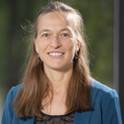
Article
Time Course of Attentional Bias in Anxiety: Emotion and Gender Specificity
Psychophysiology
(2010)
Abstract
Anxiety is characterized by cognitive biases, including attentional bias to emotional (especially threatening) stimuli. Accounts differ on the time course of attention to threat, but the literature generally confounds emotional valence and arousal and overlooks gender effects, both addressed in the present study. Nonpatients high in self‐reported anxious apprehension, anxious arousal, or neither completed an emotion‐word Stroop task during event‐related potential (ERP) recording. Hypotheses differentiated time course of preferential attention to emotional stimuli. Individuals high in anxious apprehension and anxious arousal showed distinct early ERP evidence of preferential processing of emotionally arousing stimuli along with some evidence for gender differences in processing. Healthy controls showed gender differences at both early and later processing stages. The conjunction of valence, arousal, and gender is critical in the time course of attentional bias.
Keywords
- Anxiety,
- Emotion,
- EEG/ERP
Disciplines
Publication Date
March 1, 2010
DOI
10.1111/J.1469-8986.2009.00926.X
Citation Information
Sarah M. Sass, Wendy Heller, Jennifer L. Stewart, Rebecca Levin Silton, et al.. "Time Course of Attentional Bias in Anxiety: Emotion and Gender Specificity" Psychophysiology Vol. 47 Iss. 2 (2010) p. 247 - 259 Available at: http://works.bepress.com/sarah-sass/7/
